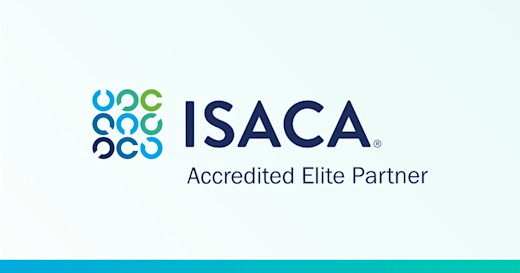Got a question? Call 02 8286 9429 | Login
Gary Duffield, Head of Vendor Partnerships at Lumify, talks about his first encounters with Exchange Server 5.5, cloud computing and going beyond the "Lift and Shift." This article was originally published on iTBrief by TechDay Network.
We all know the value of cloud training, what happens when we don’t?
I was there for one of the first few demonstrations of Exchange Server 5.5, installed from a DVD and patched from the internet, and everyone in the room was in awe. And I admit there are times when a server-based app, on-premise is the right answer. But how many organisations still run on-premise mail servers, databases or business applications?
Reality check -- cloud computing is here, it’s not going away and in fact, it’s evolving.
Despite this, many are finding that it isn't plug-and-play. Migrating successfully to the cloud means acquiring both the tech and the people with the right skills to manage it.
If your move to the cloud has been a “lift and shift” you’ve probably only achieved savings in new hardware every three years and perhaps some licensing costs. “Lift and shift” requires the lowest level of skill, returning the lowest level of productivity and cost savings.
Value starts to be unlocked when you can re-engineer existing services and develop new ones. But some organisations don't because of the skills challenges in doing these. Instead, they swap out their Exchange Server for a hosted email in the cloud. Where is the value?
In Lumify's latest survey, 83% of customers reported that their organisation migrated their core business workload to the cloud or is in the process of doing so. To ensure that they have in-house expertise for it, 85% said their companies are allocating more or the same cloud training and cloud management training as last year. Seventy-six per cent will be sending employees to a course in the next 12 months.
Upskilling is an excellent first step: recognising how investment in the cloud is not merely an investment in technology. It is an investment in people.
Leaders as learning champions
Leaders focused on technology, learning and development, employee branding, and the company's overall positioning need to advocate for training on the cloud and adjacent skills.
Moving to the cloud often serves the company's digital transformation with a focus on empowering employees, engaging with customers better, optimising operations and innovating product and service delivery. Achieving these requires expertise to make the most of what the tools offer.
It also means overhauling decades of information technology best practices and learning new ways to operate and add value. ICT teams need to understand the different functionalities in the platform and how to develop for unpredictability, cost-efficiency and scalability.
And let's not forget that cloud computing projects are projects. So, running a thriving cloud environment requires world-class project management and security.
Robert Half recommends skills training in these adjacent disciplines:
Industry frameworks and methodologies for DevOps and project and program management
Cloud security and cybersecurity to understand the common risks and vulnerabilities associated with cloud architecture
Machine learning (ML) and artificial intelligence (AI) to leverage cloud-based AI and ML applications
Communication and people skills to work with a diverse set of internal and external stakeholders and decision-makers
The ROI for cloud training
Training and retaining talent are a must for managing cloud environments. NABERS shared that running a data centre efficiently sees an average energy cost savings of $2,226,000 per year. Some of that may be your savings from maintaining a Compaq Proliant Server full of Exchange Server 5.5.
ESG surveyed learners across the globe who have taken AWS cloud courses and experienced:
Improved productivity: 84% said that training improved on-the-job efficiency and 83% reported improved effectiveness.
Increased operational skills: 85% saw improved operational skills far exceeding their expectations.
Training brings your staff on as collaborators and involves them in managing expenditures within your cloud environment.
And employees recognise this. A report by AlphaBeta found that 62% of Australian workers feel they require training in cloud-related skills by 2025. Training supports career growth, engagement and attracting talent.
The cost of inaction
Most cloud providers offer a pay-as-you-go model, while others let you reserve instances ahead of time, with a lock-in period of one to three years.
While these models are attainable, a cloud storage bill can go haywire when the application is not coded correctly, or the team has not anticipated higher data transfer volumes than usual.
These expenses are compounded by the cost of infrastructure and the cost of cyber-attacks on your cloud environment.
IBM estimates that the average price tag for a single data breach is US $8.64 million or AU $12.5 million. The average time it takes for a company to detect, remediate and recover from a cloud security attack is 280 days.
Flexera's annual “State of the Cloud Survey” found that the top 5 challenges with cloud computing include:
Security (85%)
Lack of expertise (83%)
Managing cloud spending (81%)
Governance (77%)
Managing software licenses (76%)
The way to manage these challenges is to build expertise internally.
Creating a culture of cloud learning
Leaders need to create a safe environment for conversations about the consequences of putting cloud learning on the back burner and opportunities to innovate. Beyond being a collaborative way to get buy-in, it helps the group anticipate problems and move as one team. These discussions must happen across the board - from end users to IT departments to the C-level.
Technology is just one piece of the cloud puzzle. Investing in people helps you position your company better as you begin or continue your cloud journey. You can seek out flexible learning options like self-paced programs, bootcamps, or tailormade Cloud Academies aligned with “The Skills Framework for the Information Age” (SFIA).
Train or train not. There is no try.









